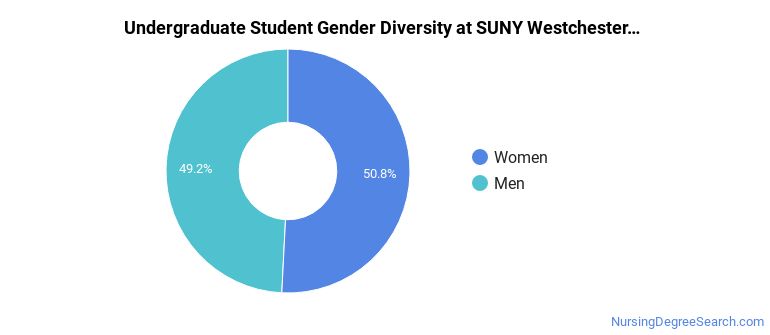SUNY Westchester Community College Nursing Programs
SUNY Westchester Community College is a public institution situated in Valhalla, New York. The suburban atmosphere of Valhalla makes it a great place for students who want the amenities of city life without actually living in the middle of a constant hustle and bustle.
Where Is SUNY Westchester Community College?

Contact details for SUNY Westchester Community College are given below.
| Contact Details | |
|---|---|
| Address: | 75 Grasslands Road, Valhalla, NY 10595 |
| Phone: | 914-606-6600 |
| Website: | www.sunywcc.edu |
How Do I Get Into SUNY Westchester Community College?
You can apply to SUNY Westchester Community College online at: www.sunywcc.edu/admissions/apply/
Can I Afford SUNY Westchester Community College?
Student Loan Debt
While almost two-thirds of students nationwide take out loans to pay for college, the percentage may be quite different for the school you plan on attending. At SUNY Westchester Community College, approximately 4% of students took out student loans averaging $5,031 a year. That adds up to $20,124 over four years for those students.
SUNY Westchester Community College Undergraduate Student Diversity

Gender Diversity
Of the 5,019 full-time undergraduates at SUNY Westchester Community College, 49% are male and 51% are female.

Racial-Ethnic Diversity
The racial-ethnic breakdown of SUNY Westchester Community College students is as follows.

| Race/Ethnicity | Number of Grads |
|---|---|
| Asian | 206 |
| Black or African American | 926 |
| Hispanic or Latino | 2,223 |
| White | 1,292 |
| International Students | 98 |
| Other Races/Ethnicities | 274 |
SUNY Westchester Community College Nursing Concentrations
The table below shows the number of awards for each concentration.
| Major | Associate’s | TOTAL |
|---|---|---|
| Registered Nursing | 49 | 49 |
| Licensed Practical/Vocational Nurse Training | 0 | 0 |
| TOTAL | 49 | 49 |
References
*The racial-ethnic minorities count is calculated by taking the total number of students and subtracting white students, international students, and students whose race/ethnicity was unknown. This number is then divided by the total number of students at the school to obtain the racial-ethnic minorities percentage.
More about our data sources and methodologies.
